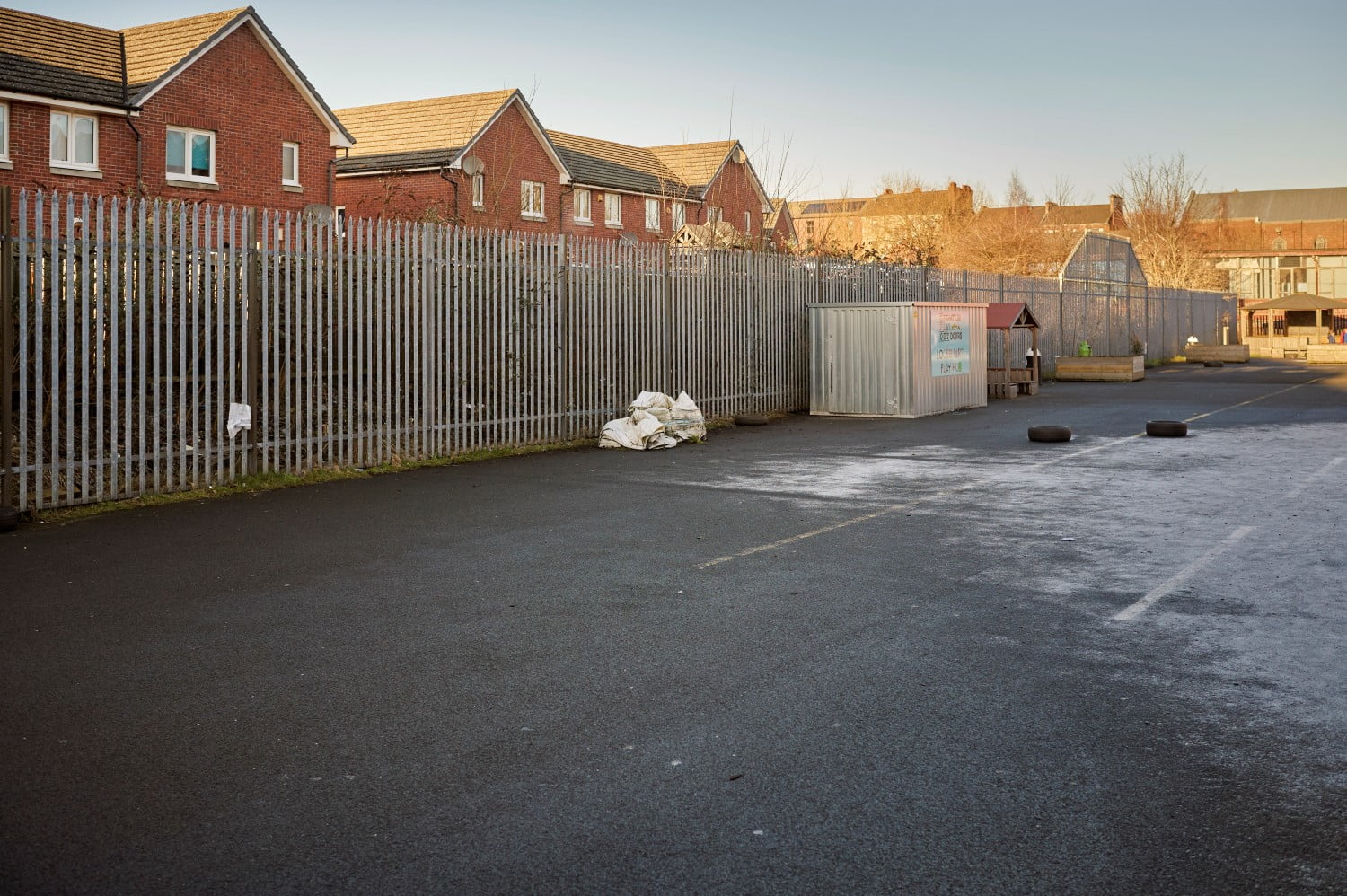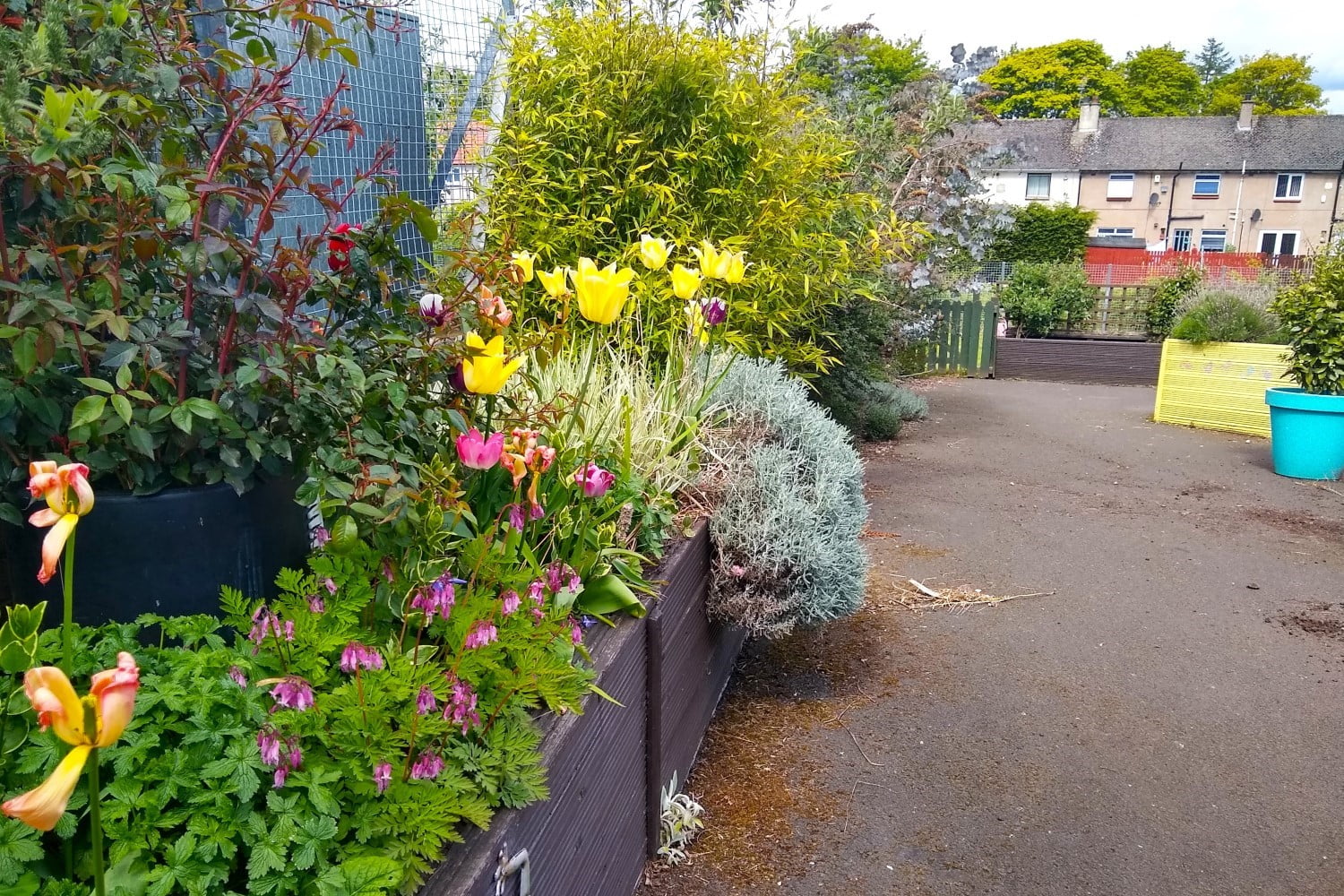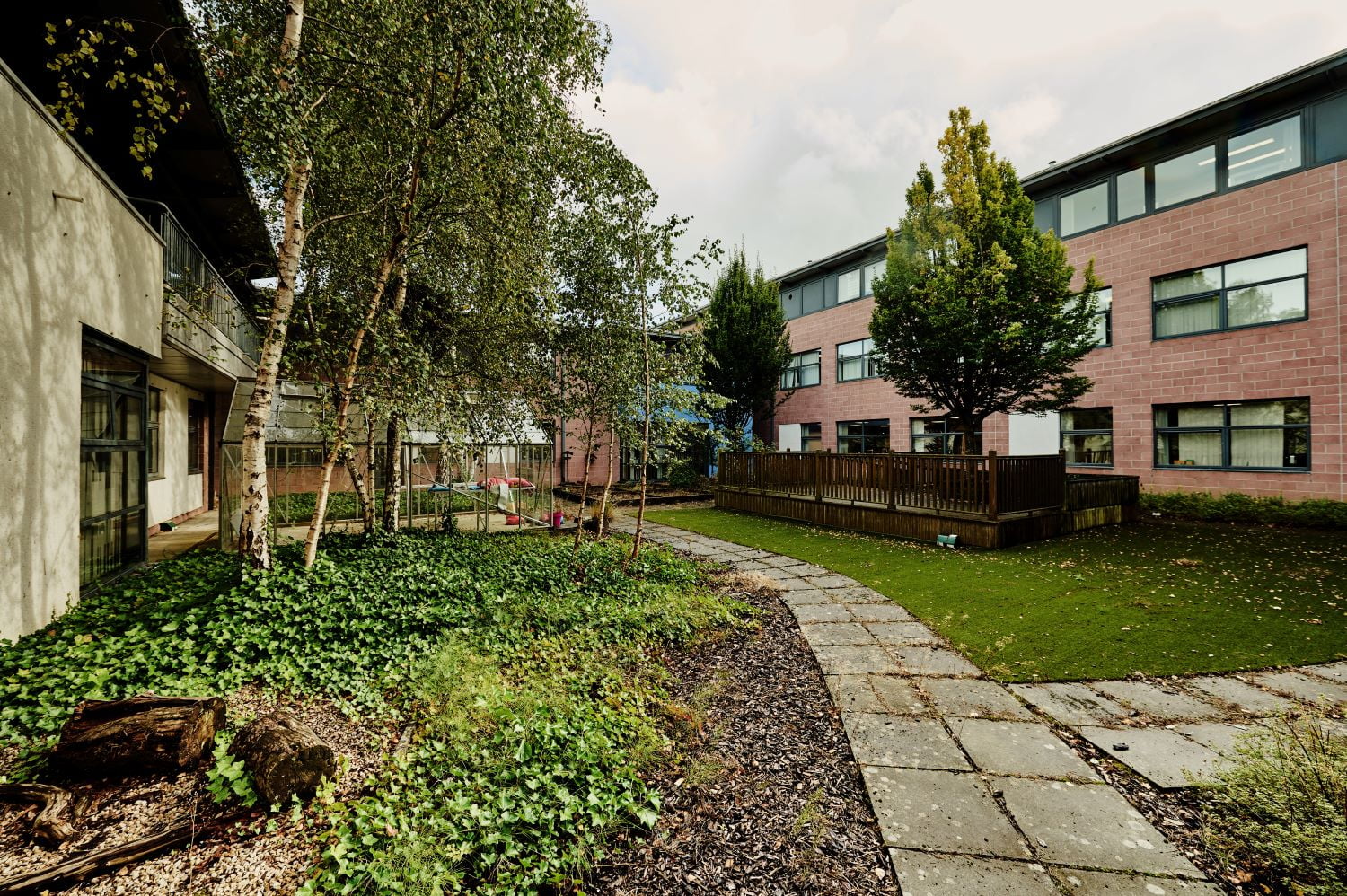20 years of Scottish school grounds: What’s changed?
Today, we’re delighted to share the summary report from our 2025 Scottish School Grounds Survey. Our Scotland Director, Matt Robinson, reviews the key findings…
In 2025, over 1,000 schools across all 32 Scottish local authorities voluntarily took part in the Scottish School Grounds Survey, undertaken by Professor John McKendrick and commissioned by Learning through Landscapes, NatureScot, and Play Scotland. This landmark research, building on a similar study from 2005, offers a rare, long-term view of how Scotland’s school grounds have evolved over two decades.
Today, we’re delighted to share the summary report from the results of the 2025 survey. The findings offer a cause for hope and celebration: our teachers, children, and young people deeply value their school grounds and are taking action to improve them. However, there are some key facts which are concerning, and require action in the form of a new, national approach to developing, maintaining, and using these vital spaces.

Key findings from the 2025 Scottish School Grounds Survey
The key findings from this year’s survey show a real split in those who accord high value and utilisation in their school grounds, and those who accord low value and utilisation:
- 15% of schools have lost outdoor space in recent years.
- 38% of schools have fewer than five trees, limiting access to natural environments.
- Climate change is already impacting half of school grounds, with increased flooding, overheating, and high winds.
- Approaching 50% of schools still perceive low utility in their grounds as a resource to support play and leisure, and most natural area types are absent from most schools.
- Just 7% of secondary schools use their grounds regularly for learning (outside of PE).
- 43% of primary schools do not consider their grounds “very useful” or “essential” for providing play at breaktimes.
- Around one-third of special schools report that their grounds are “too small.”
The future of Scottish school grounds
Despite these challenges, there are signs of progress, both practically and in aspiration:
- 85% of secondary schools would like more ‘environmental’ features in their grounds, such as habitats for nature.
- 82% of secondary schools are using their grounds to support learning in the sciences.
- 78% of primary schools report that they use their grounds for numeracy and literacy.
- Primary schools reported a modest increase in activity levels, up to 49% from 31% in 2005.
- 71% of special schools access natural areas for outdoor learning, which are within walking distance of the school site.
Why does this matter?
Scotland’s school grounds collectively cover an area the size of Dundee. These are the only spaces where every child in Scotland should have guaranteed daily access to outdoor learning, play, and sport, surrounded by nature and protected from our changing climate.
Many school grounds are still described as ‘tarmac and mown grass deserts’, and the variation in quality and use of school grounds is clear. While many schools are working hard to improve their spaces — often through local fundraising and pupil involvement — progress remains fragmented due to a lack of national vision and strategy, outdated regulations, and persistent barriers such as maintenance costs and landowner permissions.
What needs to happen next?
We believe it is time to re-invent the future of school grounds — to set an agenda of improvement to outdoor spaces, support for all educators in the use of school grounds, and a prioritisation of access for learning, play, and sport. Learning through Landscapes are calling on the Scottish Government and key stakeholders to take decisive action in the following ways:
- Convene a national roundtable of policymakers, educators, and experts to create a strategy for school grounds, unlocking support, up to date guidance and innovative funding.
- Complete the work on an update to the School Premises Regulations, which have not changed since 1964.
- Collaborate across the UK to develop national guidance for future-proofed, nature-rich, climate-adapted school grounds.
These spaces support wellbeing, shape childhood memories, and contribute to healthier lives, improved academic outcomes, and safer communities. Let’s help even more children to enjoy the benefits of learning and playing outdoors by prioritising our school grounds.
Read the 2025 Scottish School Grounds Survey summary report
Visit the Scottish School Grounds Survey page to read the summary findings of this State of the Nation report, available to view and download free of charge with the full survey report to follow in autumn 2025. Sign up to our newsletter to ensure you don’t miss it, or follow us on Bluesky, Facebook, and Instagram.











